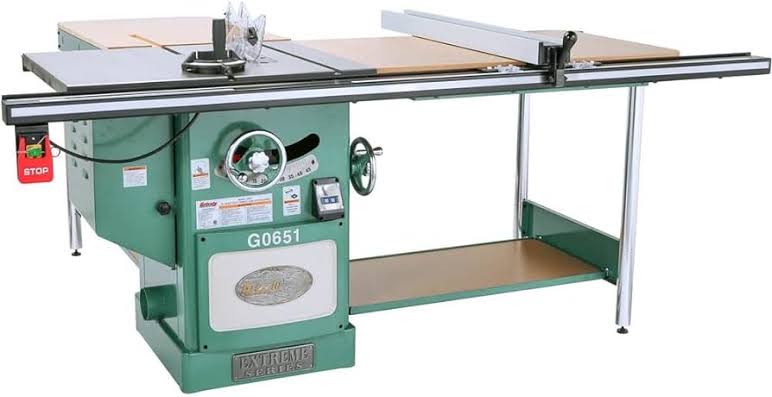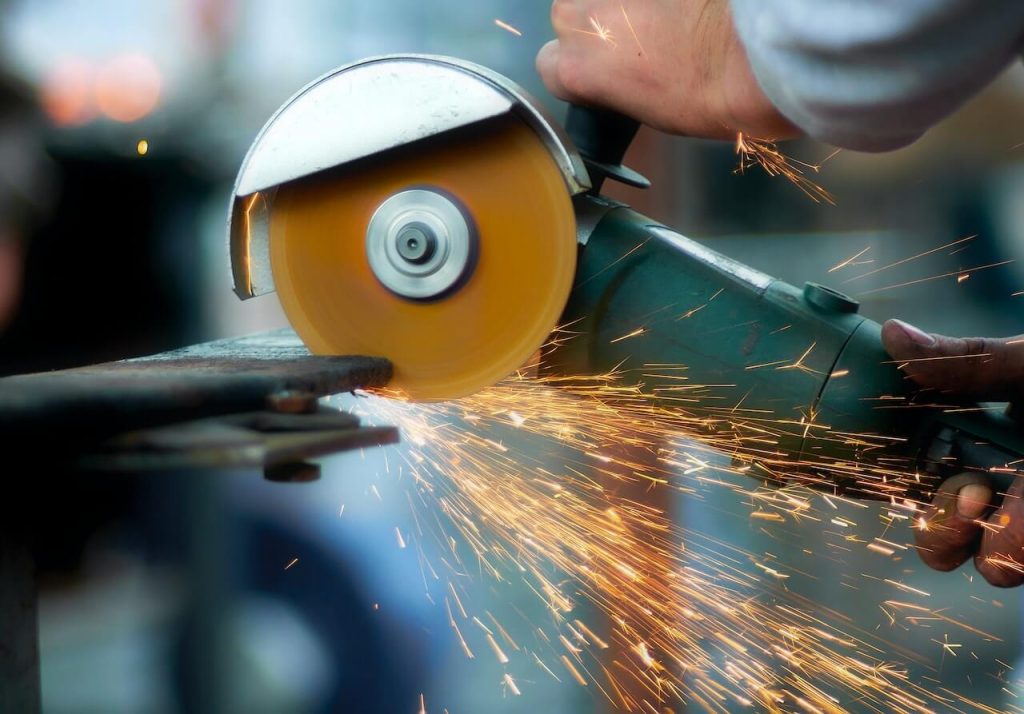A cabinet table saw is an essential piece of equipment for any serious woodworker or professional carpenter. This high-performance tool is designed for precision, power, and durability, making it ideal for handling heavy-duty cutting tasks. Whether you are building furniture, creating intricate wood designs, or working on large-scale construction projects, a cabinet table saw can be a game-changer in your workshop. In this article, we will take an in-depth look at what a cabinet table saw is, how it differs from other types of saws, what features to look for when purchasing one, and tips for using and maintaining it to ensure optimal performance.
What is a Cabinet Table Saw?
A cabinet table saw is a type of stationary table saw that is built for heavy-duty cutting and precision. Unlike contractor or portable table saws, a cabinet table saw is enclosed in a cabinet, hence the name. The cabinet design not only gives the saw a sturdier base but also houses the powerful motor and other mechanical components. Cabinet table saws are typically larger and more robust than other types of saws, making them ideal for handling larger pieces of wood and more demanding tasks. They are often used in professional workshops due to their power, accuracy, and durability. The enclosed cabinet helps reduce noise, dust, and vibration, making it a more efficient and comfortable tool to use for extended periods.
Key Features of a Cabinet Table Saw
When choosing a cabinet table saw, there are several key features you should consider to ensure you are getting the best tool for your needs.
- Motor Power: Cabinet table saws are known for their powerful motors, typically ranging from 3 to 5 horsepower (HP) or more. The higher the horsepower, the more powerful the saw, allowing it to cut through thick and dense materials with ease. If you frequently work with hardwoods or large sheets of plywood, opting for a saw with a higher horsepower will ensure smooth and efficient cutting.
- Rip Capacity: Rip capacity refers to the distance between the saw blade and the fence, which determines how wide a piece of wood you can cut. Cabinet table saws usually offer a large rip capacity, which is ideal for cutting wide boards or large panels. When selecting a saw, consider the type of projects you will be working on to ensure the rip capacity meets your requirements.
- Fence System: A precise and stable fence system is crucial for making accurate cuts. Look for a cabinet table saw that comes with a high-quality fence that is easy to adjust and lock into place. A good fence system will allow you to make straight, consistent cuts, which is especially important for intricate woodworking projects.
- Table Size: The size of the table on your saw is another important factor to consider, especially if you work with large pieces of wood. A larger table provides more support and stability, making it easier to handle bigger materials. Some cabinet table saws come with extension tables or wings, which can be added to increase the surface area.
- Dust Collection System: Sawdust can accumulate quickly when using a table saw, so having an effective dust collection system is essential. Many cabinet table saws come with built-in dust ports that can be connected to a dust collection system or vacuum. This helps keep your workspace clean and reduces the amount of airborne dust, which is not only a nuisance but can also pose health risks.
- Safety Features: Safety is always a top priority when working with power tools, and cabinet table saws are no exception. Look for models that come equipped with safety features such as riving knives, blade guards, and anti-kickback pawls. Some newer models also feature flesh-sensing technology, which can stop the blade almost instantly if it comes into contact with skin.
- Blade Options: The blade is the heart of the table saw, and having the right blade for the job is essential. Most cabinet table saws come with a standard 10-inch blade, but there are different types of blades available depending on the material you are cutting. For example, a rip blade is designed for cutting along the grain of the wood, while a crosscut blade is better suited for cutting across the grain. There are also combination blades that can handle both types of cuts.
Advantages of Using a Cabinet Table Saw
One of the biggest advantages of using a cabinet table saw is the level of precision it offers. Because of its solid construction and powerful motor, it can make extremely accurate cuts, even on large and thick pieces of wood. This precision is especially important for professional woodworkers who need to create flawless pieces of furniture or cabinetry.
Another advantage is its durability. Cabinet table saws are built to last, with heavy-duty components that can withstand years of use. The enclosed cabinet helps protect the motor and other parts from dust and debris, which can extend the life of the saw. Additionally, the stability provided by the cabinet design reduces vibration during operation, leading to smoother cuts and less wear on the machine.
Cabinet table saws also offer more versatility than other types of saws. With the right blade and accessories, you can use a cabinet table saw for a wide range of tasks, from ripping large sheets of plywood to making delicate crosscuts on hardwood. The large table surface and high rip capacity make it easier to work with oversized materials, which can be challenging on smaller, less powerful saws.
How to Use a Cabinet Table Saw Safely
Using a cabinet table saw safely requires attention to detail and adherence to best practices. Here are some safety tips to keep in mind when operating a cabinet table saw.
- Wear Appropriate Safety Gear: Always wear safety goggles or a face shield to protect your eyes from sawdust and wood chips. Hearing protection is also recommended, especially if you will be using the saw for extended periods. Additionally, wearing a dust mask can help protect your lungs from airborne particles.
- Inspect the Saw Before Use: Before turning on the saw, inspect the blade and fence to ensure they are properly aligned and secure. Check that the blade guard and other safety features are in place and functioning correctly.
- Use Push Sticks or Push Blocks: When making cuts, especially on smaller pieces of wood, use push sticks or push blocks to keep your hands away from the blade. This will help reduce the risk of injury and provide better control over the material.
- Keep the Work Area Clear: Make sure the area around the saw is free of clutter and debris. This will help prevent tripping hazards and ensure you have enough space to maneuver large pieces of wood safely.
- Follow the Manufacturer’s Instructions: Always follow the manufacturer’s instructions for your specific saw model. This includes proper setup, operation, and maintenance procedures.
Maintaining Your Cabinet Table Saw
Proper maintenance is key to keeping your cabinet table saw in optimal condition. Regular maintenance not only extends the life of the saw but also ensures that it operates safely and efficiently. Here are some maintenance tips to follow.
- Clean the Saw After Each Use: After using the saw, clean the table surface and remove any sawdust or debris that may have accumulated around the blade and inside the cabinet. A shop vacuum or compressed air can be helpful for cleaning hard-to-reach areas.
- Lubricate Moving Parts: Periodically lubricate the moving parts of the saw, such as the gears and trunnions, to ensure smooth operation. Use a lubricant recommended by the manufacturer to avoid damaging the saw.
- Check the Blade for Wear: Over time, the blade will become dull, which can result in rough cuts and increased strain on the motor. Regularly check the blade for signs of wear and replace it when necessary. Sharpening the blade is also an option if it is still in good condition.
- Inspect the Fence and Miter Gauge: Ensure that the fence and miter gauge are properly aligned and functioning correctly. Misaligned components can result in inaccurate cuts and pose safety risks.
- Test the Safety Features: Periodically test the safety features of the saw, such as the riving knife and blade guard, to make sure they are working properly. If any safety features are damaged or malfunctioning, repair or
replace them immediately before using the saw again. Safety should always be your top priority.
Conclusion
A cabinet table saw is an indispensable tool for woodworkers and professionals who need a powerful, durable, and precise cutting machine. With the right features and proper maintenance, it can greatly enhance your woodworking capabilities and allow you to tackle a wide range of projects with ease. Whether you are building custom furniture, cabinetry, or working on large-scale construction tasks, investing in a high-quality cabinet table saw is a decision that will pay off in the long run. Remember to prioritize safety, maintain your saw regularly, and choose a model that fits your specific needs to get the most out of your woodworking experience.



